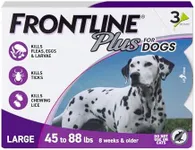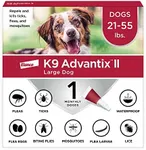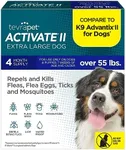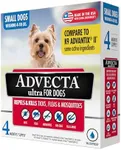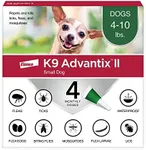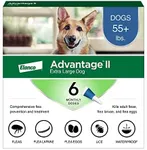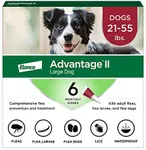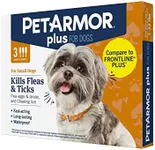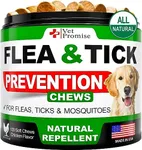Buying Guide for the Best Topical Dog Flea Treatment
Choosing the right topical flea treatment for your dog is crucial to ensure their health and comfort. Flea treatments help prevent infestations that can cause itching, skin infections, and even more serious health issues. When selecting a product, it's important to consider several key specifications to ensure you pick the best fit for your dog's needs. Here are the main factors to consider:Active IngredientsActive ingredients are the chemicals in the treatment that kill or repel fleas. Common active ingredients include fipronil, imidacloprid, and selamectin. It's important because different ingredients target different stages of the flea lifecycle and may have varying levels of effectiveness. If your dog has had reactions to certain chemicals in the past, you'll want to avoid those. For general prevention, a broad-spectrum ingredient like fipronil might be suitable, while for severe infestations, a combination of ingredients might be necessary.
Dog's WeightTopical flea treatments are often dosed based on the weight of your dog. This is important because an incorrect dosage can be ineffective or even harmful. Treatments are usually segmented into weight ranges, such as small (up to 22 lbs), medium (23-44 lbs), large (45-88 lbs), and extra-large (89 lbs and up). Always weigh your dog before purchasing to ensure you get the correct dosage. If your dog is on the borderline between weight categories, consult your vet for the best option.
Age of DogThe age of your dog can determine which flea treatments are safe to use. Puppies, for example, have more sensitive systems and may require milder formulations. Most treatments specify a minimum age, often around 8 weeks. For senior dogs, you might need to consider their overall health and any other medications they are taking. Always check the product label for age recommendations and consult your vet if you are unsure.
Duration of EffectivenessThis refers to how long the treatment remains effective after application. Common durations are 30 days, but some products offer protection for up to 3 months. This is important for convenience and ensuring continuous protection. If you prefer less frequent applications, a longer-lasting treatment might be more suitable. However, for dogs that swim or are bathed frequently, a shorter duration might be better as it allows for more regular reapplication.
Water ResistanceWater resistance indicates whether the treatment remains effective after your dog gets wet, either from swimming or bathing. This is crucial for active dogs that spend a lot of time outdoors or in water. Treatments labeled as water-resistant will continue to protect your dog even after exposure to water. If your dog is frequently in water, look for a product that specifically mentions water resistance to ensure continuous protection.
Ease of ApplicationEase of application refers to how simple it is to apply the treatment to your dog. Some treatments come in easy-to-use applicator tubes, while others might require more effort to spread evenly. This is important for ensuring the treatment is applied correctly and effectively. If you have a dog that is difficult to handle, look for products with straightforward application methods. Reading user reviews can also provide insights into how easy a product is to apply.
